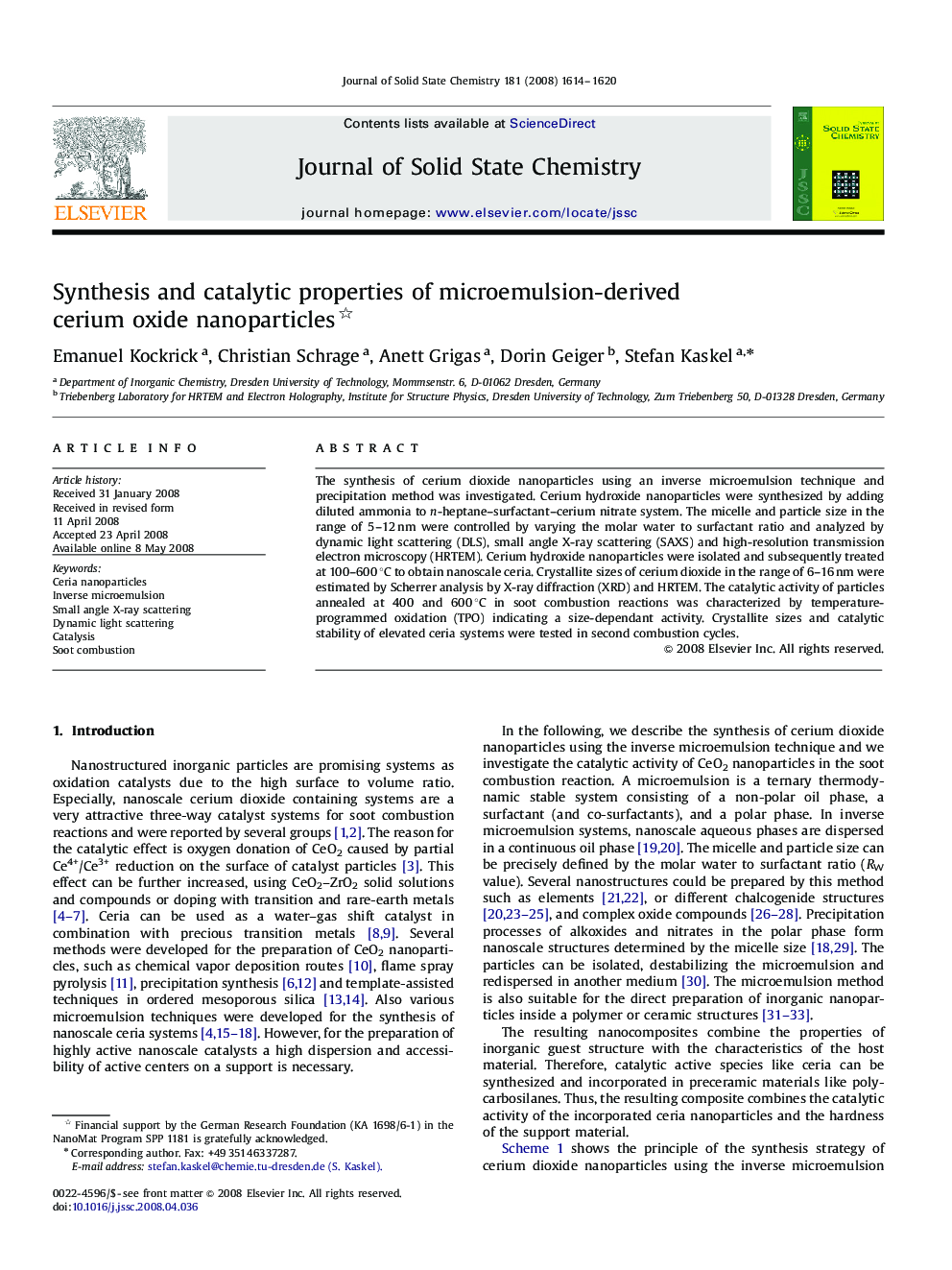| Article ID | Journal | Published Year | Pages | File Type |
|---|---|---|---|---|
| 1333650 | Journal of Solid State Chemistry | 2008 | 7 Pages |
The synthesis of cerium dioxide nanoparticles using an inverse microemulsion technique and precipitation method was investigated. Cerium hydroxide nanoparticles were synthesized by adding diluted ammonia to n-heptane–surfactant–cerium nitrate system. The micelle and particle size in the range of 5–12 nm were controlled by varying the molar water to surfactant ratio and analyzed by dynamic light scattering (DLS), small angle X-ray scattering (SAXS) and high-resolution transmission electron microscopy (HRTEM). Cerium hydroxide nanoparticles were isolated and subsequently treated at 100–600 °C to obtain nanoscale ceria. Crystallite sizes of cerium dioxide in the range of 6–16 nm were estimated by Scherrer analysis by X-ray diffraction (XRD) and HRTEM. The catalytic activity of particles annealed at 400 and 600 °C in soot combustion reactions was characterized by temperature-programmed oxidation (TPO) indicating a size-dependant activity. Crystallite sizes and catalytic stability of elevated ceria systems were tested in second combustion cycles.
Graphical abstractThe synthesis of cerium dioxide nanoparticles using an inverse microemulsion technique and precipitation method was investigated using small angle X-ray scattering, dynamic light scattering and high-resolution transmission electron microscopy. Catalytic activity of ceria nanoparticles was tested in soot combustion reaction indicating size-dependent reactivity.Figure optionsDownload full-size imageDownload as PowerPoint slide
